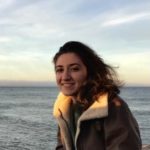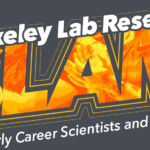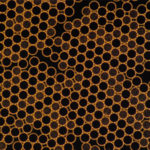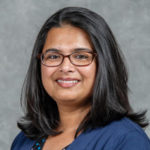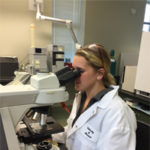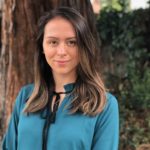
Outreach
ENIGMA science engages undergraduate researcher in environmental microbiology
University of Georgia undergraduate student Elizabeth Szink has been working in the lab of ENIGMA principal investigator Mike Adams under the guidance of ENIGMA postdoctoral researcher Jennifer Goff.
Observing the Microbial Genome
Basics2Breakthroughs: Observing the microbial genome from Berkeley Lab on YouTube. ENIGMA Project Scientist Lauren Lui is profiled on LBL Basics2Breakthroughs, filmed for LBNL’s 90th anniversary. She uses the latest bioinformatics technology to study microbes so we can learn how their genes shape the environment. Her ultimate goal is to be able to predict microbial interactions […]
Fostering interest in science and engineering through community college outreach
Recently, ENIGMA Principal Investigator Romy Chakraborty hosted college student Mariam Alsaid; an intern who participated in the The Transfer-to-Excellence Research Experiences for Undergraduates (TTE REU)program. She worked with ENIGMA postdocs Mon Oo Yee, and Kristine Cabugao. Mariam shared her experience with the program in the following interview
Congratulations Sara Gushgari-Doyle Berkeley Lab SLAM 2nd place winner!
Aug 28, 2020-Two Percent https://slam.lbl.gov/2020-slam/2020-slam-finalists/sara-gushgari-doyle
ENIGMA’s Sara Gushgari-Doyle, of the Earth and Environmental Sciences Area, uses computational and big-data approaches to inform strategies for culturing rare and difficult-to-culture microorganisms. Watch Gushgari-Doyle’s SLAM presentation to find out more. She placed 2nd out of 12 Finalists.
ENIGMA’s Fangchao Song is Berkley Lab SLAM Finalist!
October 18, 2019–Fanchao Song of Arkin Lab was selected to compete in Berkeley Lab “Early Career Scientist and Research SLAM.” Here is his presentation from the SLAM “I am a Bubble Player,” which was selected from a competitive field of 42 entries. This is the “3-minute-describe-your-work-in-layman-terms” challenge that Berkeley Lab is hosting for postdocs. Finalists receive coaching via “Making the Most of Your Presentation” workshop, a unique opportunity to get one-on-one feedback from a globally renowned speaker, Jean-Luc Doumont of Principiae. Finalists had a chance to win a $3,000 first prize! You can read more about the results https://slam.lbl.gov/ He shares his experience, to encourage other team members to participate! How did you initially hear about the SLAM? I heard about SLAM when the lab called for the participation on SLAM2018. I read the instructions and felt it is interesting.
Dr Romy Chakraborty Wins Director’s Award for Outreach
https://recognition.lbl.gov/laureates/
2019 Outreach: ROMY CHAKRABORTY, Citation: In recognition of Romy Chakraborty’s extensive service as a mentor for programs that engage underrepresented groups in science, and for her significant contribution to outreach that aims to increase diversity, equity, and inclusion in STEM fields.
About the Director’s Awards
The Director’s Awards program recognizes significant achievements of Lab employees. Each year, these awards are given for accomplishments, leadership, collaboration, multi-disciplinary science, cross-divisional projects, and commitment to excellence in support of the Lab’s mission and strategic goals. Each year, Berkeley Lab employees submit nominations of individuals and teams, which are then reviewed by a Lab-wide Director’s Awards committee.
Sulfonate utilization by Desulfovibrio may expand ecological niches
September 18, 2019–Day, L.A.; K.B. De León, M.L. Kempher, J. Zhou, J.D. Wall (2019) Complete Genome Sequence of Desulfovibrio desulfuricans IC1, a Sulfonate-Respiring Anaerobe. Microbiology Resource Announcements. [doi]: 1128/MRA.00456-19
As part of ongoing work related to the 100-Well Survey of the Oak Ridge Reservation (ORR) supported by ENIGMA, Leslie Day, an undergraduate student, has published a genome announcement for a strain of Desulfovibrio, a sulfate-reducing bacterium (SRB), that grows by respiration of sulfonates. Genome comparisons have identified a candidate pathway and probes to explore the taxonomic distribution of this metabolism. Data from the earlier survey work showed that the SRB and sulfate were nearly mutually exclusive in the groundwater of the ORR prompting Leslie to determine if alternative sources of sulfate could possibly explain this result. A literature review pointed to sulfonates, ubiquitous in nature, as potential electron acceptors for SRB. As part of the Environmental Ark Campaign, she has shown that the sulfonate isethionate is used by a subset of SRB as a terminal electron acceptor and has identified the transporter and potential metabolic pathway for isethionate. The widespread distribution of sulfonates in the terrestrial environment may contribute to an understanding of the abundance of SRB in niches low in sulfate.



